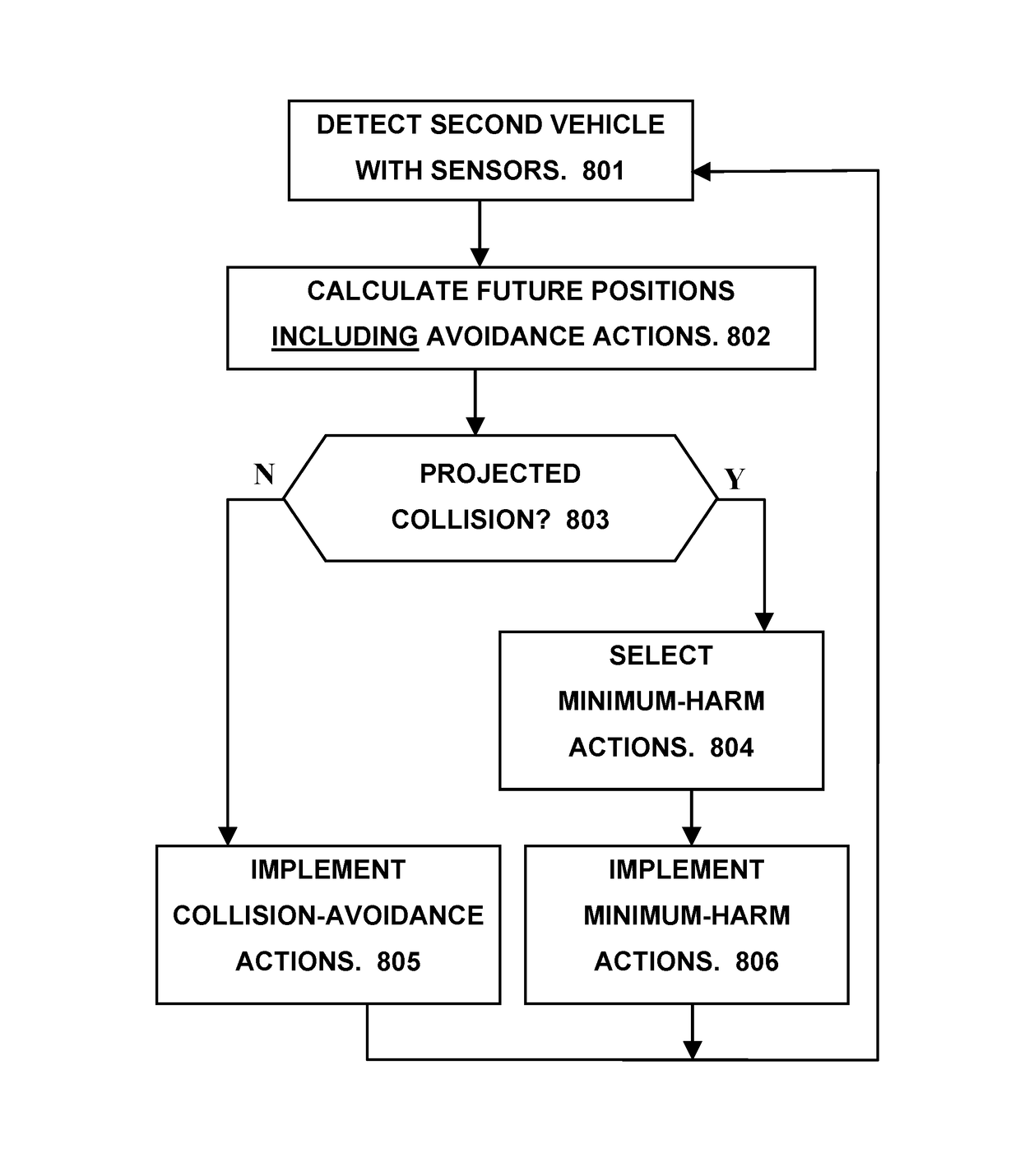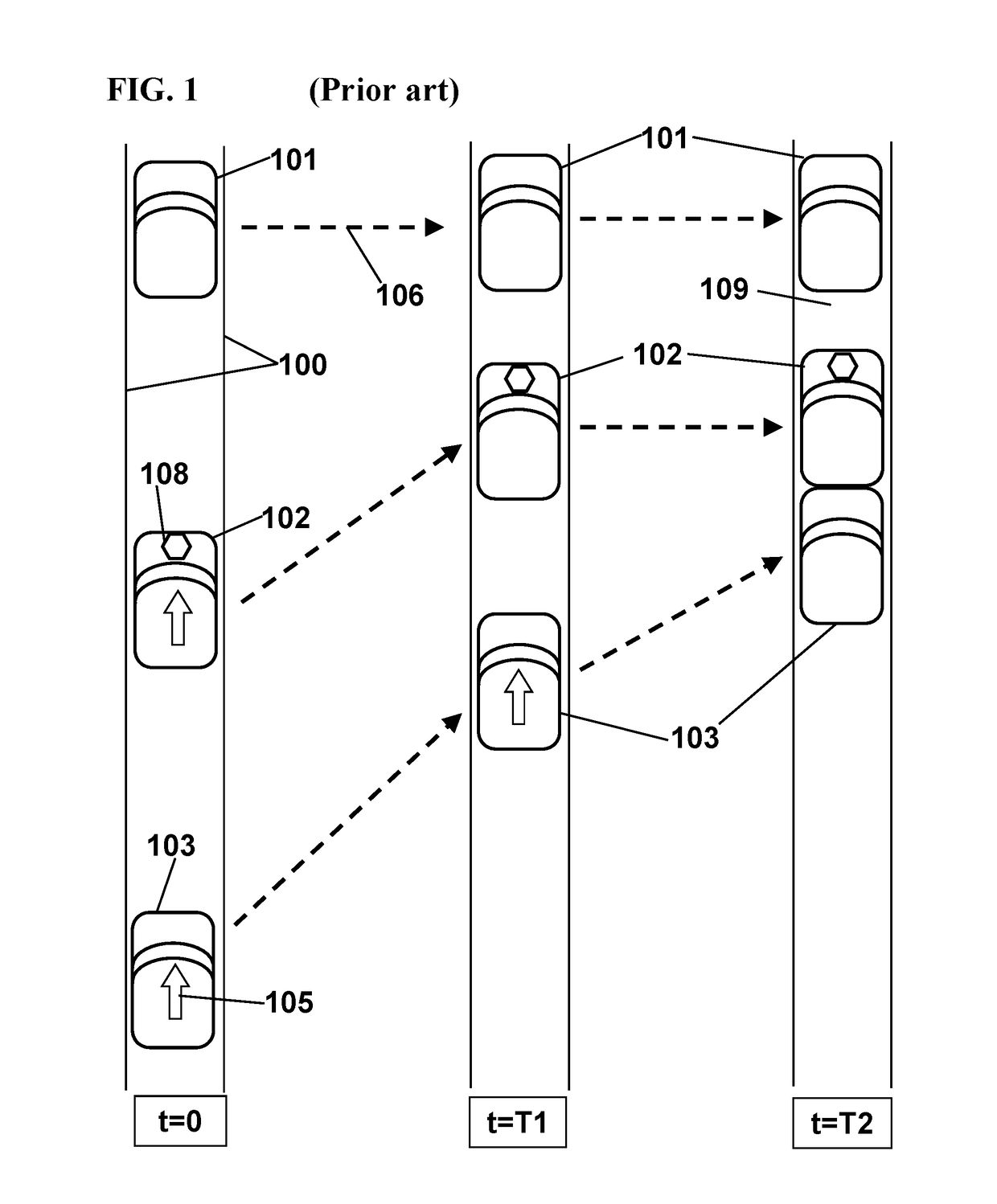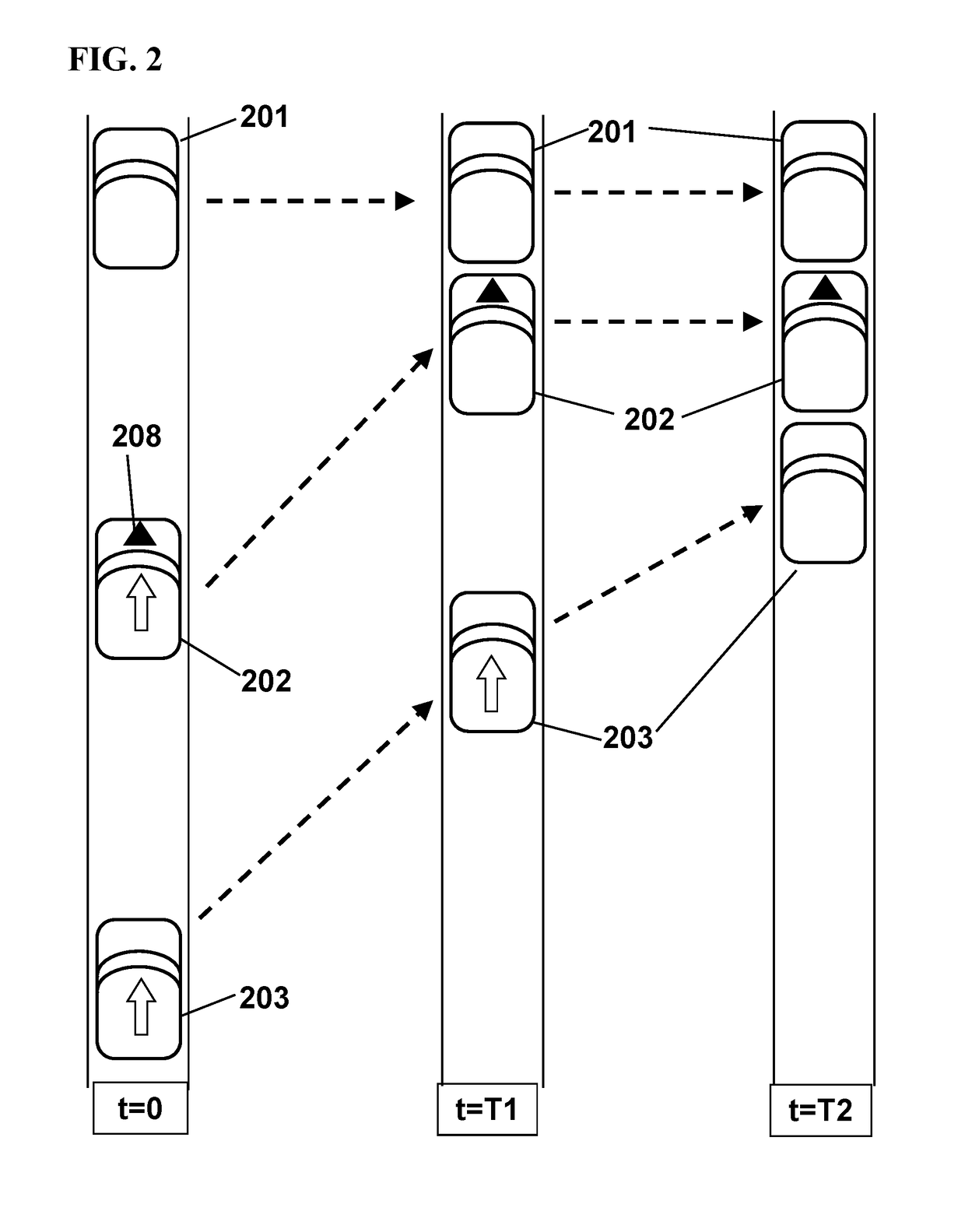Systems and methods for hazard mitigation
a technology of system and method, applied in the direction of vehicle position/course/altitude control, process and machine control, instruments, etc., can solve the problems of ineffective strategy, inability to provide a strategy for minimizing fatalities, injuries and damage in situations, and inability to simply lock the brakes, etc., to achieve the effect of enhancing the quality of national highway safety, steady improvement of system reliability, and reducing collisions
- Summary
- Abstract
- Description
- Claims
- Application Information
AI Technical Summary
Benefits of technology
Problems solved by technology
Method used
Image
Examples
Embodiment Construction
[0095]A collision mitigation system according to the present principles comprises sensor means, computing means, acceleration and deceleration means, steering means, and optionally indirect mitigation means and adjustment means. The sensor means includes internal sensors and external sensors, all mounted on the subject vehicle and all providing sensor data. The computing means may comprise a single computing device such as a multi-core CPU, or it may include any number of separate digital processors interconnected by data buses. The acceleration means comprises the throttle if the subject vehicle has an internal-combustion engine, or whatever regulates the power output if the engine is electric. The deceleration means comprises the brakes along with electrical-hydraulic-mechanical controls for the brakes. If the vehicle has regenerative braking, this system too is included in the braking means. Optionally, and preferably, the deceleration means includes separate braking controls for...
PUM
 Login to View More
Login to View More Abstract
Description
Claims
Application Information
 Login to View More
Login to View More - R&D
- Intellectual Property
- Life Sciences
- Materials
- Tech Scout
- Unparalleled Data Quality
- Higher Quality Content
- 60% Fewer Hallucinations
Browse by: Latest US Patents, China's latest patents, Technical Efficacy Thesaurus, Application Domain, Technology Topic, Popular Technical Reports.
© 2025 PatSnap. All rights reserved.Legal|Privacy policy|Modern Slavery Act Transparency Statement|Sitemap|About US| Contact US: help@patsnap.com



